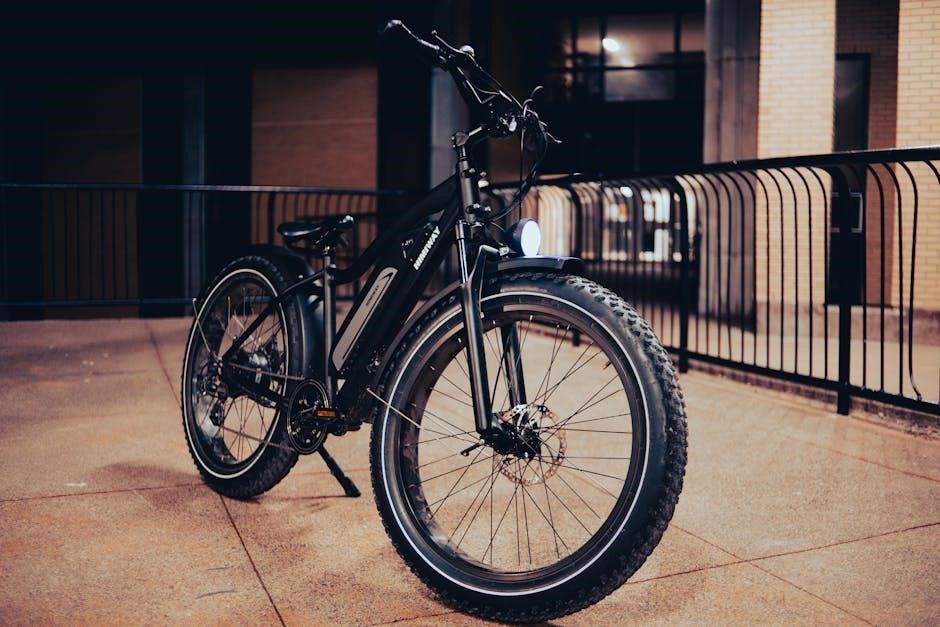ucsd campus map pdf
The UCSD Campus Map PDF is a comprehensive guide designed to help students, staff, and visitors navigate the university’s extensive campus. It provides detailed layouts, including major landmarks, academic buildings, and directional pathways, ensuring easy accessibility and orientation. The map is user-friendly, with color-coded sections and symbols for clarity, making it an essential resource for everyone exploring UCSD.
Overview of UCSD Campus Map
The UCSD Campus Map PDF provides a detailed visual representation of the University of California, San Diego’s campus. It includes layouts of buildings, roads, pathways, and major landmarks, ensuring easy navigation. The map is regularly updated to reflect campus changes and expansions. It features color-coded zones and symbols for quick identification of different areas. Key locations such as academic facilities, research centers, libraries, housing, and recreational spaces are clearly marked. The map also highlights practical information like parking lots, public transportation stops, bike paths, and emergency services, making it an essential tool for daily campus life and exploration.
Importance of Campus Maps for Navigation
Importance of Campus Maps for Navigation
Campus maps are essential for efficient navigation, especially in large universities like UCSD. They help users locate buildings, classrooms, and services quickly, saving time and reducing stress. For newcomers, maps provide a clear understanding of campus layout, aiding orientation. They also highlight accessible routes and emergency services, ensuring safety. With detailed information on parking, transportation, and bike paths, campus maps enhance overall mobility. They are indispensable for daily activities, events, and emergencies, making them a vital resource for the university community.
Key Features of UCSD Campus Map PDF
The UCSD Campus Map PDF offers a comprehensive layout of the campus, highlighting key landmarks, academic buildings, and essential facilities. It includes color-coded zones for easy navigation, accessible routes, and emergency service locations. The map also details bike-friendly paths and parking areas, ensuring ease of movement. With its user-friendly design, the PDF is accessible on multiple devices, making it a practical tool for students, staff, and visitors. Its detailed and organized structure ensures users can quickly find their destinations, enhancing the overall campus experience.

Accessing the UCSD Campus Map PDF
The UCSD Campus Map PDF can be easily accessed through the official UCSD website; Users can download it directly from the campus resources section or via specific links provided for quick access. The PDF is compatible with various devices, ensuring convenience for students, staff, and visitors to navigate the campus efficiently.
Official Sources for Download
The UCSD Campus Map PDF is available for download through the official UCSD website, ensuring authenticity and reliability. The university’s campus resources section provides direct links to the latest version of the map. Additionally, specific departments and administrative offices may offer downloadable versions tailored to particular needs. These official sources guarantee that users receive the most up-to-date and accurate information, essential for effective navigation of the campus. Always prioritize downloading from UCSD-affiliated websites to ensure the map’s validity and accessibility.
Steps to Download the PDF
To download the UCSD Campus Map PDF, visit the official UCSD website and navigate to the campus resources section. Locate the “Campus Map” link and select the PDF version. Click the download button to save the file to your device. Ensure you have Adobe Acrobat Reader installed for proper viewing. Follow any additional prompts to complete the download. This straightforward process ensures quick access to the map, enabling easy navigation of the UCSD campus. Always use official sources to guarantee the map’s accuracy and reliability.
Compatibility with Different Devices
The UCSD Campus Map PDF is designed to be compatible with a variety of devices, ensuring accessibility for all users. It can be viewed on smartphones, tablets, laptops, and desktop computers using Adobe Acrobat Reader or similar PDF viewers. The map is also compatible with both iOS and Android operating systems, making it easily accessible on mobile devices. Additionally, the PDF format ensures that the map retains its quality and layout when viewed on different screen sizes, providing a consistent experience across devices. This versatility makes the UCSD Campus Map PDF a reliable resource for navigation, whether on campus or planning a visit remotely.

Understanding the Layout of UCSD Campus
The UCSD campus is divided into distinct zones, each housing specific facilities and landmarks, ensuring a logical and organized structure for easy navigation and accessibility.
Major Landmarks and Buildings
The UCSD campus features iconic landmarks such as the Geisel Library, a futuristic hub for learning, and the Old Globe Theatre, a renowned venue for performing arts. Prominent academic buildings include the Powell-Focht Bioengineering Hall and the Jacobs Medical Center. Student centers like the Price Center and student housing areas are centrally located, ensuring accessibility. The campus also boasts state-of-the-art research facilities and administrative offices, each strategically placed to enhance functionality and navigation. These landmarks serve as key reference points, aiding visitors in exploring the campus efficiently.
Division of Campus into Zones
UCSD’s campus is strategically divided into distinct zones to enhance organization and accessibility. These zones include residential areas, academic clusters, recreational spaces, and administrative sectors. The PDF map clearly outlines these divisions, making it easier for users to locate specific regions. Each zone is color-coded and labeled, ensuring quick identification. This structured approach helps students, staff, and visitors navigate the vast campus efficiently, while also highlighting key facilities and services within each area. The zonal layout promotes a balanced and functional environment, reflecting UCSD’s commitment to sustainability and accessibility.
Location of Academic and Administrative Facilities
The UCSD Campus Map PDF meticulously highlights the locations of academic and administrative facilities, ensuring easy access for students and staff. Key buildings such as libraries, lecture halls, and department offices are clearly marked. Administrative centers, including the registrar and financial aid offices, are also pinpointed. The map’s organized layout helps users quickly identify the nearest facilities, streamlining daily tasks and appointments. This feature is particularly useful for first-time visitors and new students navigating the campus.

Navigation and Orientation

The UCSD Campus Map PDF provides clear pathways and uses color coding and symbols for easy navigation, enhanced by GPS and online tools.
How to Use the Map for First-Time Visitors
For first-time visitors, using the UCSD Campus Map PDF begins with downloading it from the official UCSD website. Open the PDF and use zoom tools to locate your starting point. Identify key landmarks like the library or student center. Use color-coded zones to navigate between areas. Check for directional arrows and labeled pathways. Ensure the map is updated for accuracy. Familiarize yourself with symbols for parking, restrooms, and emergency services. GPS integration can help pinpoint your location. Highlighting routes in advance saves time and reduces confusion. This guide ensures a smooth and stress-free campus experience.
Identifying Key Routes and Pathways
The UCSD Campus Map PDF highlights major pedestrian routes, bike paths, and shuttle stops with distinct colors and symbols. Main pathways are prominently marked, ensuring easy navigation between academic buildings, libraries, and residential areas. The map also labels roadways and accessible walkways, helping users avoid construction zones or restricted areas. Zooming in on specific zones reveals detailed connections between landmarks, making it easier to plan efficient routes. This feature is particularly useful for identifying the shortest paths between classes or facilities, ensuring a seamless campus experience for all users.
Understanding Color Coding and Symbols
The UCSD Campus Map PDF uses color coding and symbols to enhance readability and simplify navigation. Academic buildings, residential areas, and recreational spaces are distinguished by unique colors, while symbols denote specific facilities like libraries, parking lots, and emergency services. The map includes a legend that explains these symbols, ensuring users can quickly identify key locations. Consistent color schemes and intuitive symbols help users orient themselves and navigate efficiently, making the map an indispensable tool for exploring the campus.

Integration with Other Tools and Technologies
The UCSD Campus Map PDF integrates seamlessly with tools like ArcGIS Indoors for facility management and GIS applications, enhancing navigation and campus planning efficiency for users.

UCSD’s Interactive Online Maps
UCSD’s interactive online maps offer dynamic and real-time navigation, complementing the PDF version. These maps, accessible via the university’s website, allow users to zoom, pan, and search for specific locations. They provide up-to-date information on campus buildings, parking, and pathways. Integrated with tools like ArcGIS Indoors, they enhance facility management and wayfinding. The interactive maps are particularly useful for first-time visitors, offering a user-friendly interface to explore the campus virtually. They are also accessible on mobile devices, ensuring convenience for students, staff, and guests navigating UCSD’s expansive grounds.
GPS and Mobile App Integration
The UCSD campus map integrates seamlessly with GPS and mobile apps, enhancing navigation for users. Through apps like UCSD Mobile, students and visitors can access real-time directions, building locations, and campus events. GPS functionality provides turn-by-turn guidance, making it easier to find destinations. Mobile apps also offer location-based alerts and updates, ensuring users stay informed. This integration allows for a more interactive and connected experience, supporting campus exploration and daily activities efficiently across various devices.
Use of GIS Applications for Campus Management
UCSD leverages GIS applications to enhance campus management and planning. These tools enable the creation of detailed spatial data, aiding in facility management, resource allocation, and infrastructure development. GIS technology supports emergency response planning and environmental sustainability initiatives. By integrating real-time data, UCSD ensures efficient operations and informed decision-making. This advanced approach streamlines campus management, benefiting both daily operations and long-term strategic goals, while maintaining a sustainable and safe environment for the university community.

Transportation and Parking Information
The UCSD Campus Map PDF highlights parking lots, structures, and public transportation options, ensuring convenient access for all. Bike-friendly paths and rental services are also clearly marked, promoting eco-friendly commuting and reducing traffic congestion while enhancing sustainability efforts across the campus.
Location of Parking Lots and Structures
The UCSD Campus Map PDF provides detailed information about parking lots and structures, ensuring easy access for visitors and staff. Each parking area is clearly marked with labels and color-coded for permit types, helping users quickly identify the most convenient options. The map also highlights parking garages and surface lots near major buildings, reducing navigation challenges. With its intuitive design, the map simplifies finding parking spots, making it easier to explore the campus efficiently. This feature is especially helpful for first-time visitors and commuters.
Public Transportation Options
The UCSD Campus Map PDF highlights public transportation options, making it easier for students and visitors to navigate without a car. It includes bus routes, shuttle services, and stops across campus. The map details connections to nearby transit hubs and neighboring areas, ensuring convenient travel. Specific routes, such as the La Jolla Shuttle, are clearly marked, along with their coverage areas. Additionally, the map integrates with real-time tracking tools, allowing users to plan their journeys efficiently. This feature is particularly useful for those relying on public transit to access campus facilities and surrounding communities.
Bike-Friendly Paths and Rentals
The UCSD Campus Map PDF emphasizes bike-friendly paths and rental options, promoting sustainable transportation. Dedicated bike lanes and shared pathways are clearly marked, ensuring safe and efficient travel across campus. The map highlights rental stations where students and visitors can access bikes, fostering an eco-friendly commute. Additionally, it identifies bike racks and storage areas, making cycling a convenient option. UCSD’s commitment to cycling aligns with its sustainability goals, encouraging a greener and healthier campus environment for all users.

Accessibility and Special Features
The UCSD Campus Map PDF highlights accessible routes, facilities, and emergency services, ensuring inclusivity for all users. It also features sustainability initiatives like electric vehicle charging stations and green spaces, promoting eco-friendly practices across campus.
Accessible Routes and Facilities
The UCSD Campus Map PDF clearly marks accessible routes, ramps, and elevators, ensuring seamless navigation for individuals with disabilities. It highlights restrooms, entrances, and parking areas designed for accessibility. The map also identifies shuttle stops with accessible boarding, making transportation convenient. Color-coded pathways guide users through ADA-compliant routes, while symbols denote facilities like adaptive recreational spaces. This feature enhances inclusivity, allowing everyone to explore the campus confidently and independently;
Emergency Services and Safety Locations
The UCSD Campus Map PDF highlights emergency services and safety locations, ensuring quick access during critical situations. It marks emergency call boxes, first aid stations, and evacuation assembly points. The map also identifies the UCSD Police Department and fire stations, providing clear directions. Additionally, it includes routes to emergency exits and safety shelters. This feature ensures that users can locate help swiftly, enhancing overall campus safety and preparedness for everyone. The map integrates with the UCSD mobile app, offering real-time alerts and navigation assistance during emergencies.
Sustainability Initiatives on Campus
The UCSD Campus Map PDF showcases the university’s commitment to sustainability by highlighting eco-friendly initiatives. It identifies green building locations, recycling centers, and energy-efficient facilities. The map also pinpoints bike paths, electric vehicle charging stations, and solar panel installations. Additionally, it marks water-saving projects and organic gardens, promoting environmental awareness. These features encourage students and visitors to engage with UCSD’s sustainable practices, aligning with its goal of reducing its environmental footprint; The map serves as a valuable tool for navigating and supporting eco-conscious efforts across campus.

Comparison with Other Formats
The UCSD Campus Map PDF offers portability and ease of use, unlike interactive online maps or mobile apps requiring internet access. While printed maps provide a tactile experience, the PDF is easily searchable and sharable. Its universal compatibility ensures accessibility across devices, making it a versatile choice for campus navigation compared to other formats.
Printed vs. Digital Maps
Printed maps offer a tactile experience and quick reference without device dependency, while digital formats like the UCSD Campus Map PDF provide ease of search, sharing, and frequent updates. Digital maps eliminate the need for physical storage and ensure accessibility across multiple devices, making them more convenient for modern users. However, printed maps remain ideal for those preferring a physical copy. The choice depends on personal preference and utility, with digital maps excelling in flexibility and updates, while printed versions offer simplicity and reliability.
Advantages of PDF Format
The UCSD Campus Map PDF offers universal compatibility across devices, ensuring consistent formatting and readability. PDFs are easily shareable and accessible without internet, making them ideal for offline use. The format preserves high-resolution details, crucial for map accuracy. Additionally, PDFs support zooming, enabling users to view specific areas without losing clarity. These features make the PDF format a reliable and practical choice for navigating the UCSD campus efficiently, catering to both digital and offline preferences while maintaining visual integrity and functionality.
Future Trends in Campus Mapping
Future trends in campus mapping include enhanced integration with GIS applications and interactive online tools, such as ArcGIS Indoors, for improved facility management. Augmented reality (AR) and virtual reality (VR) technologies may soon offer immersive navigation experiences. Smart campus initiatives could incorporate real-time data, such as traffic updates or parking availability, into maps. These advancements aim to create a seamless, user-friendly experience, ensuring that campus maps evolve alongside technological innovations, providing better accessibility and sustainability for future users.
The UCSD Campus Map PDF is an essential tool for navigating the campus, offering detailed layouts and user-friendly features; Its adaptability ensures it remains a vital resource for future students and visitors.
Final Thoughts on UCSD Campus Map PDF
The UCSD Campus Map PDF is a vital resource for navigating the university’s sprawling campus. It provides clear, detailed layouts of buildings, landmarks, and pathways, ensuring easy accessibility for all users. The map’s color-coded sections and symbols enhance readability, while its compatibility with various devices makes it a practical tool for both first-time visitors and regular users. By integrating with GIS applications and interactive online maps, the UCSD Campus Map PDF remains a cutting-edge solution for campus navigation, supporting sustainability and emergency services. It is an indispensable guide for anyone exploring UCSD.
Recommendations for Users
- Download the latest UCSD Campus Map PDF for the most accurate and updated information.
- Use the map in conjunction with interactive online tools for enhanced navigation.
- Utilize GPS integration on mobile devices for real-time directions.
- Familiarize yourself with color coding and symbols for easier orientation.
- Check for regular updates to ensure you have the latest version.
- Explore accessibility features for inclusive navigation.
- Refer to the map for parking, transportation, and emergency services.
Future Updates and Improvements
Future updates to the UCSD Campus Map PDF will likely include enhanced interactive features, real-time updates for construction, and improved accessibility options. Integration with augmented reality (AR) technology could provide immersive navigation experiences; The map may also incorporate user feedback to refine route planning and landmark identification. Regular updates will ensure the inclusion of new buildings and facilities as the campus expands. Additionally, advancements in GIS applications will enhance the map’s precision and usability, making it an even more indispensable tool for the UCSD community.

















































